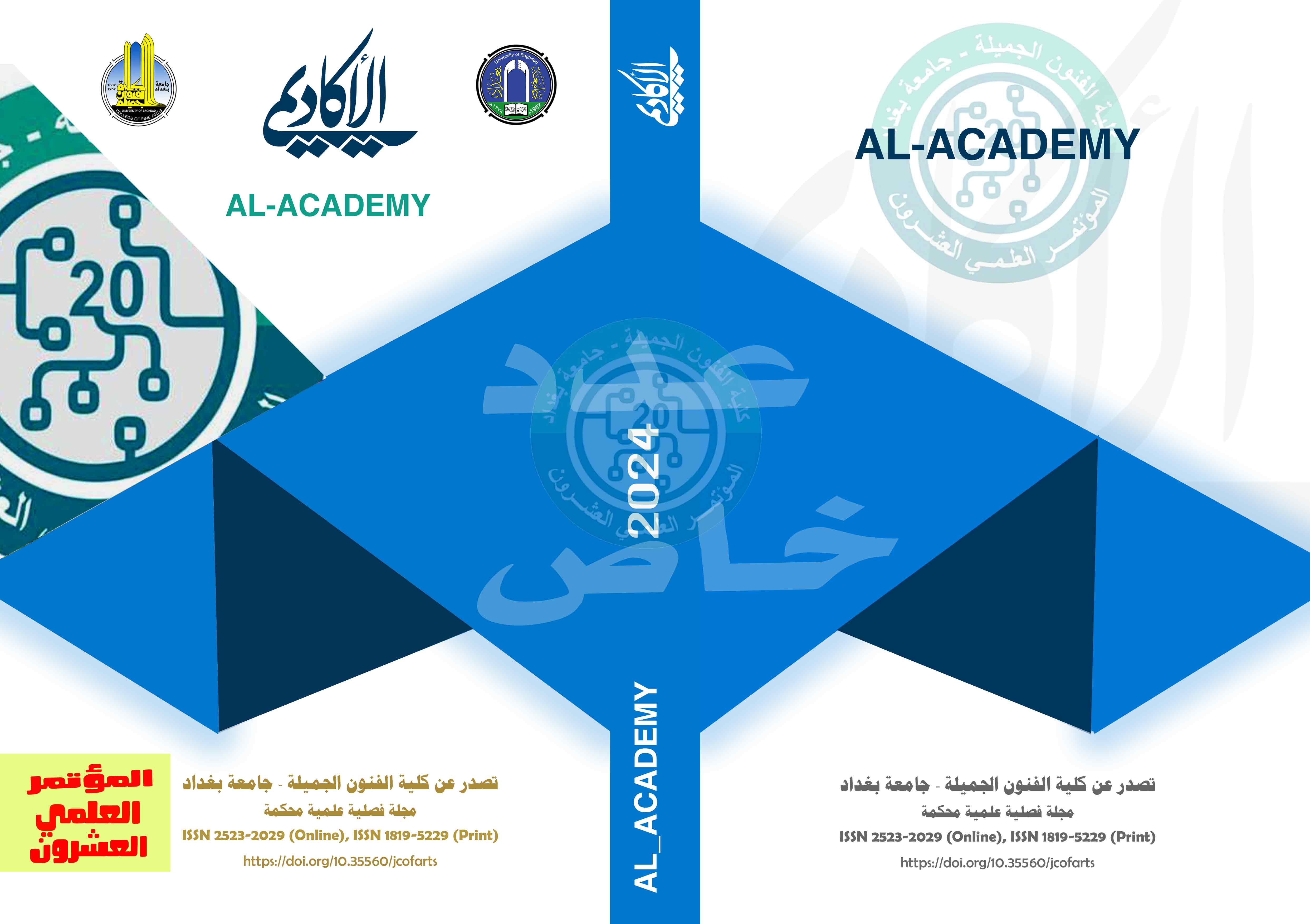تطبيقات تكنولوجيا الذكاء الاصطناعي في تدريس الفنون: القصص الشعبية العُمانية أنموذجا
DOI:
https://doi.org/10.35560/jcofarts1431الكلمات المفتاحية:
تكنولوجيا الذكاء الاصطناعي، القصص الشعبية العُمانيةالملخص
تُعَدُّ التكنولوجيا الحديثة أداةً قويةً في العملية التدريسية لمراحل التعليم المختلفة، حيث تُقَدِّمُ مجموعةً من الفوائد التي تعزز عمليتي التعليم والتعلم كونها تُوفِّر منصات القراءة الرقمية والتطبيقات الذكية، وفرصة الوصول الفوري إلى مجموعة واسعة من القصص والحكايات، الأمر الذي يُشجِّع على تنوُّع قراءاة الأطفال، وتوسيع أفقهم الثقافي؛ وبلا شك فإن توفر قصص رقمية للأطفال يمَكِّنُ من التفاعل المباشر مع النصوص والمحتوى المعرفي، حيث تَجمع هذا النوع من القصص بين الصوتيات، والرسوم المتحركة، والتفاعلات التي تُعزِّزُ متعة القراءة وتُشعِّر الأطفال بمشاركة أكبر في عالم القصة وفهم عميق بخيال واسع يؤدي إلى االابتكار والابداع. يهدف المشروع البحثي الحالي إلى الاستفادة من إمكانيات تكنولوجيا الذكاء الاصطناعي في رسم بعض القصص الشعبية العُمانية من خلال استخدام المنهج الوصفي التحليلي، والمنهج الشبه التجريبي بصفتهم وسائل فعّالة لنقل القصص والحكايات إلى عالم الأطفال، مع توفر فرص لأتاحت منصات القراءة الرقمية وتطبيقات الهواتف الذكية للأطفال والوصول إلى محتوى غني متنوع من القصص التراث العُماني غير المادي في قوالب حديثة معاصرة بكل سهولة ويسر. ويعتبر مشروع رقمنة القصص العُمانية الشعبية في قالب رقميًا بصفتها أحد المخرجات الأساسية لهذا المشروع مع وجود فرص لتطبيقها في الجانب التربوي بطرق تتسم بالإبداع والابتكار من خلال تطبيقات تكنولوجيا الذكاء الاصطناعي.
المراجع
James, Annie. (2010). Animation and language development. Children and Pupils Journal, 53(4).
Morris, J. (2008). The role of picture books and animation in teaching reading. Arab Journal of Education, 28(3).
Al-Nabalawi, Aida Fouad. (2016). Omani folk tales and their social and cultural significance: Dra Anthropological year. Journal of Arts and Social Sciences - Sultan Qaboos University, Volume 3, Issue 2, pp. 347-371.
Hart, Stuart. (2017). Animation and Education: A Teacher's Guide. Dar Al Hadara for Publishing and Distribution.
Hudhali, Fawaz, and Sheikh, Hajira (2022). Applications of artificial intelligence in the field of design and its relationship to creativity and innovation as a modern trend - the Japanese experience as an example -. Journal of Legal and Economic Studies، 5(1)، 845-863. https://www.asjp.cerist.dz/en/downArticle/649/5/1/191603
Badawi, M. (2014). Arabic Children's Literature: Reality and Challenges, Journal of Humanities and Social Sciences, 41(1), 128-141.
Beckett, S., & McKechnie, L. (2017). Understanding Children's Literature. Routledge.
Bellaiche, Lucas, Shahi, Rohin, Turpin, Martin, Ragnhildstveit, Anya, Sprockett, Shawn, Barr,
Chung, S. K. (2007). Art education technology: Digital storytelling. Art Education, 60(2), 17-22.
Jaruga-Rozdolska, A. (2022). Artificial intelligence as part of future practices in the architect’s work: MidJourney generative tool as part of a process of creating an architectural form. Architetus, 3(71), 97-104. DOI: 10.37190/arc220310
Graylin, A. W. (2019). Virtual Reality: A New Storytelling Medium. In Augmented Reality, Virtual Reality, and Computer Graphics (pp. 107-119). Springer.
He, Caixia, Sun, Baoguo (2021). Application of artificial intelligence technology in computer aided art teaching. Computer-Aided Design and Applications, 18(S4), 118–129. https://doi.org/10.14733/cadaps.2021.s4.118-129
Kong, Fanwen (2020). Application of artificial intelligence in modern art teaching. International Journal of Emerging Technologies in Learning (iJET), 15(13), 238. https://doi.org/10.3991/ijet.v15i13.15351
Maye, L., Bouchard, D., Avram, G. & Ciolfi, L. (2017). Supporting Cultural Heritage Professionals Adopting and Shaping Interactive Technologies in Museums. Spaces & Surfaces, June 10-14, 221-232. https://dl.acm.org/doi/pdf/10.1145/3064663.3064753
Murphy, R. (2019). Introduction to ai robotics (Second, Ser. Intelligent robotics and autonomous agents). MIT Press.
OECD. (2023). Recommendation of the council on artificial intelligence. file:///C:/Users/algha/Downloads/OECD-LEGAL-0449-en.pdf
Pilkey, D. (2002). The adventures of Super Diaper Baby. New York, NY: Blue Sky.
Wolf, S. (2015). The Handheld: Researching the Impact of Mobile Technologies on Children’s Literature. Children's Literature in Education, 46(3), 291-302.
Tomasik, B. (2017). Artificial Intelligence and its implications for future suffering. Foundational Research Institute: Basel, Switzerland.
UNICEF. (2021). Policy guidance on AI for children. https://www.unicef.org/globalinsight/media/2356/file/UNICEF-Global-Insight-policy-guidance-AI-children-2.0-2021.pdf
Yang, R. (2020). Artificial Intelligence-Based Strategies for Improving the Teaching Effect of Art Major Courses in Colleges. International Journal of Emerging Technologies in Learning (iJET), 15(22), 146-160. Kassel, Germany: International Journal of Emerging Technology in Learning. Retrieved May 5, 2022 from https://www.learntechlib.org/p/218414/.















